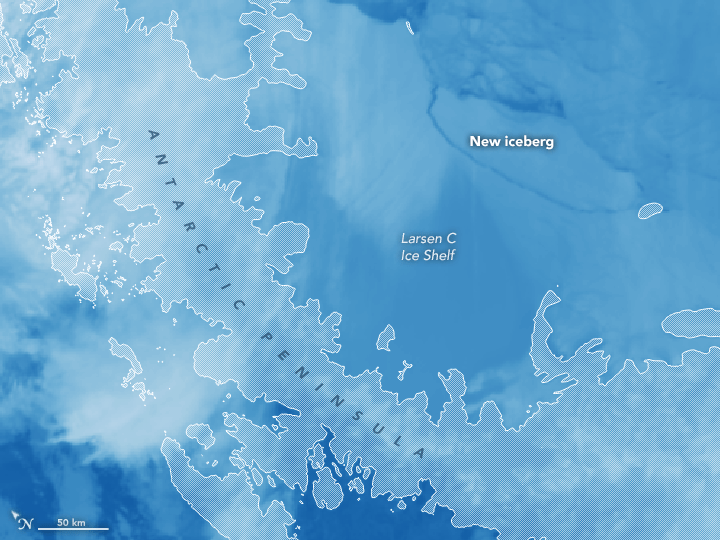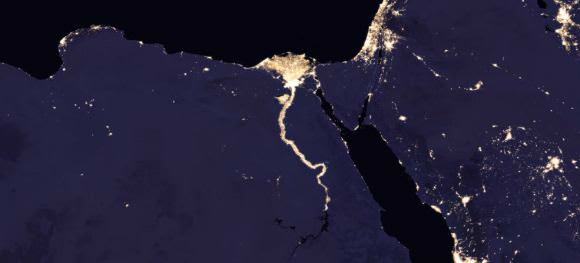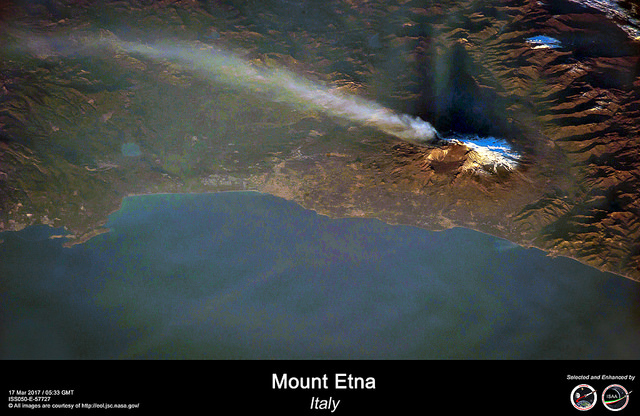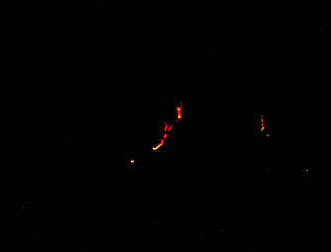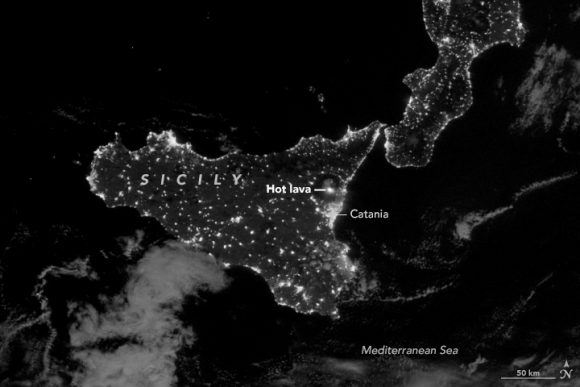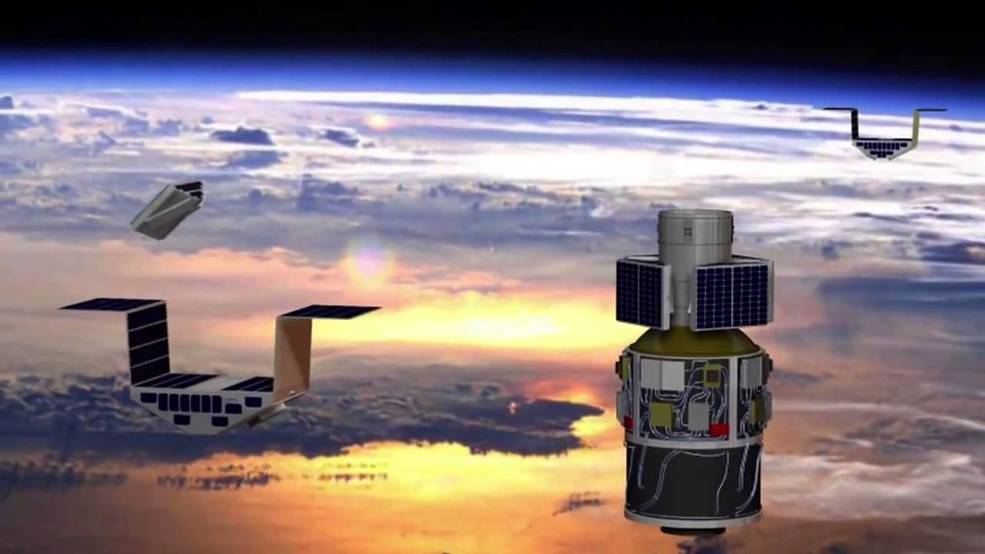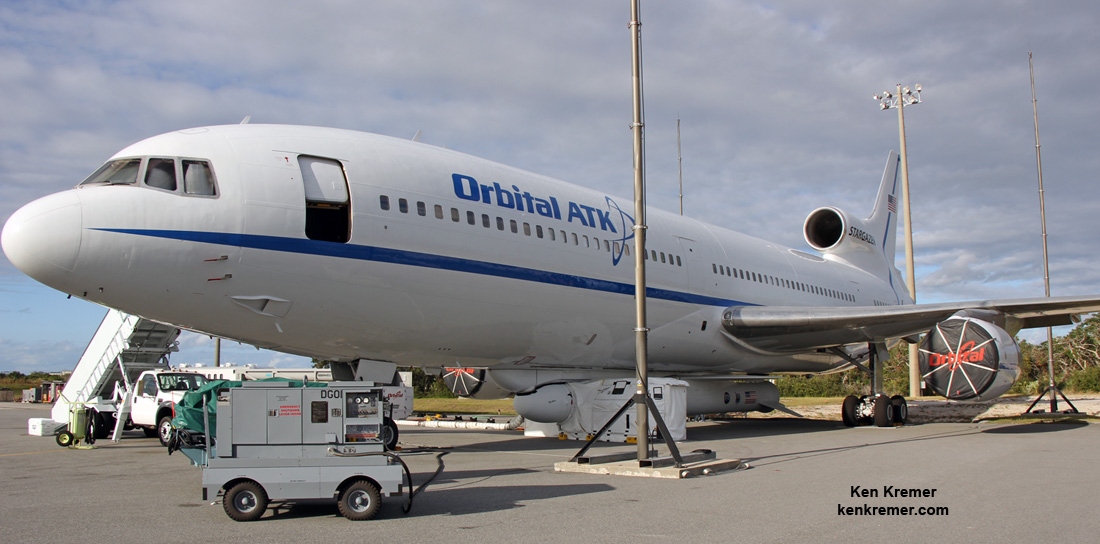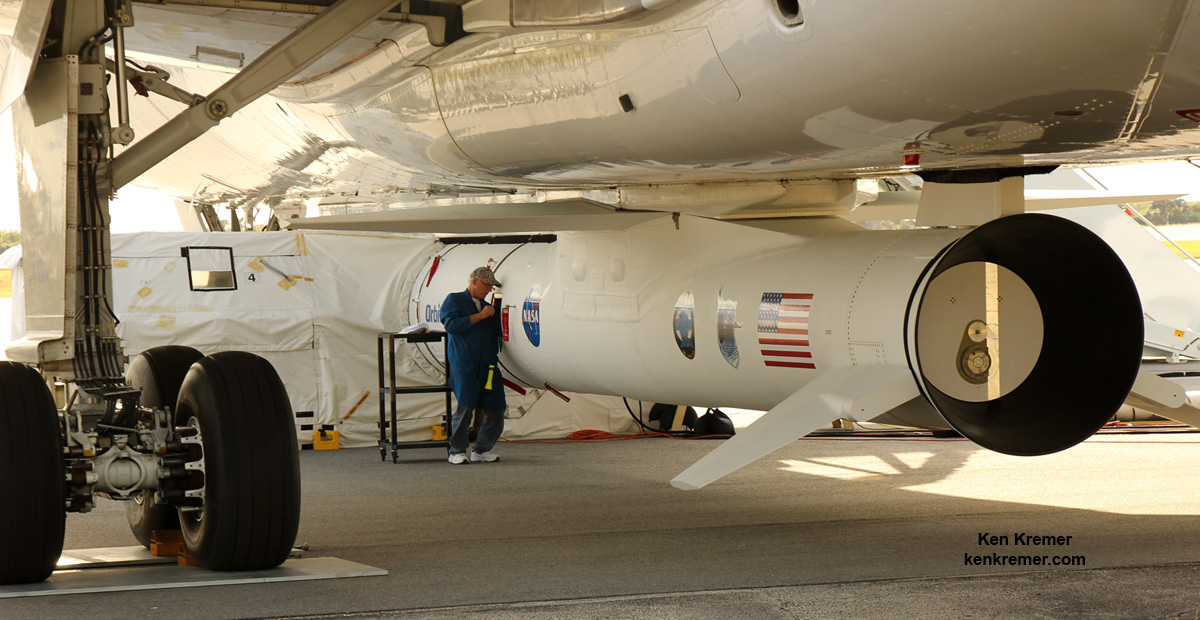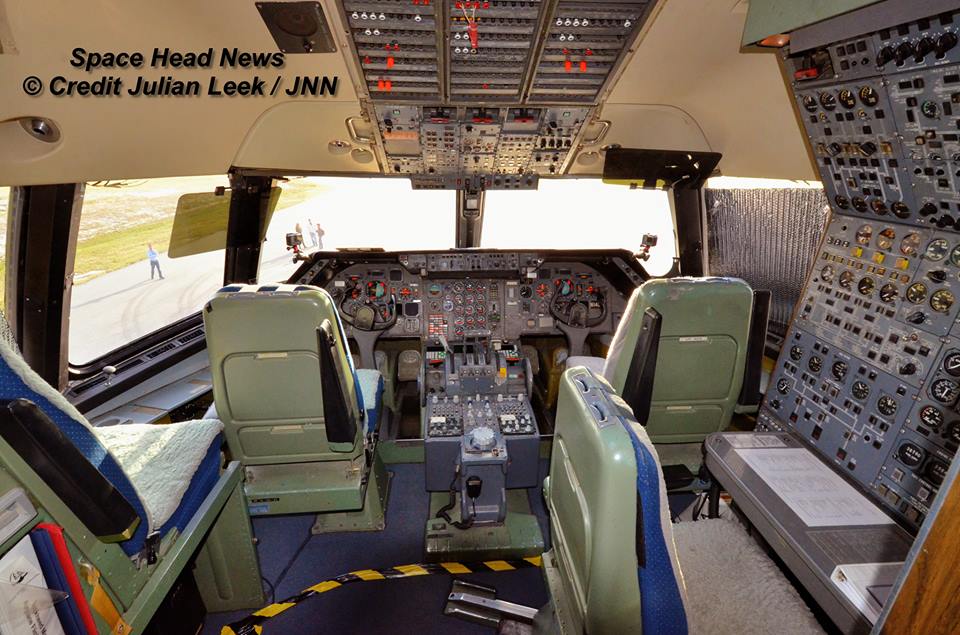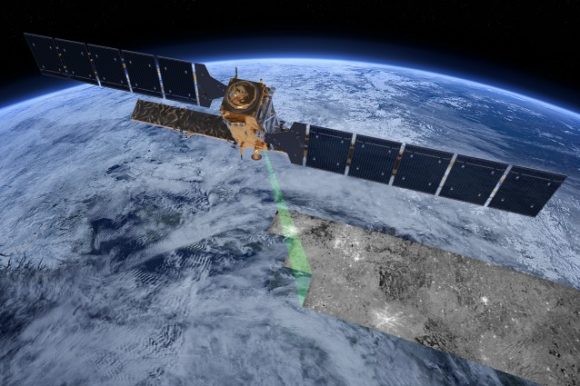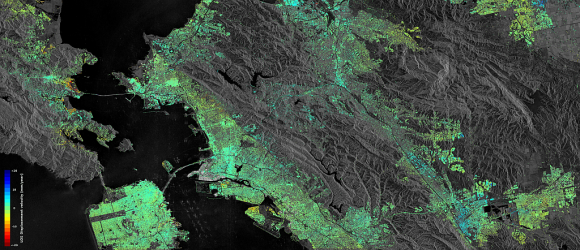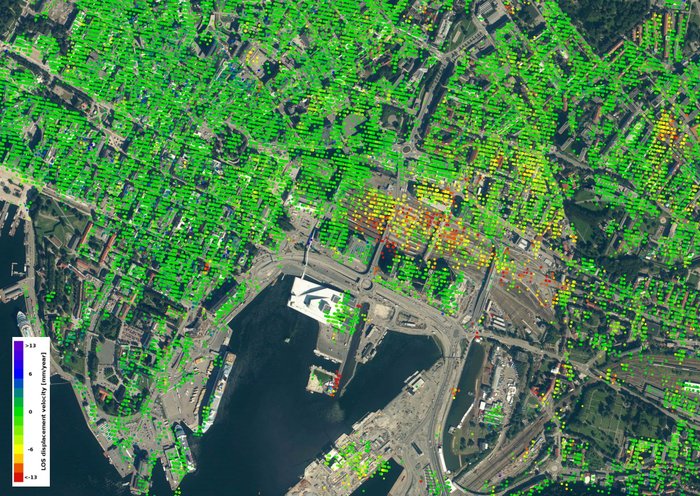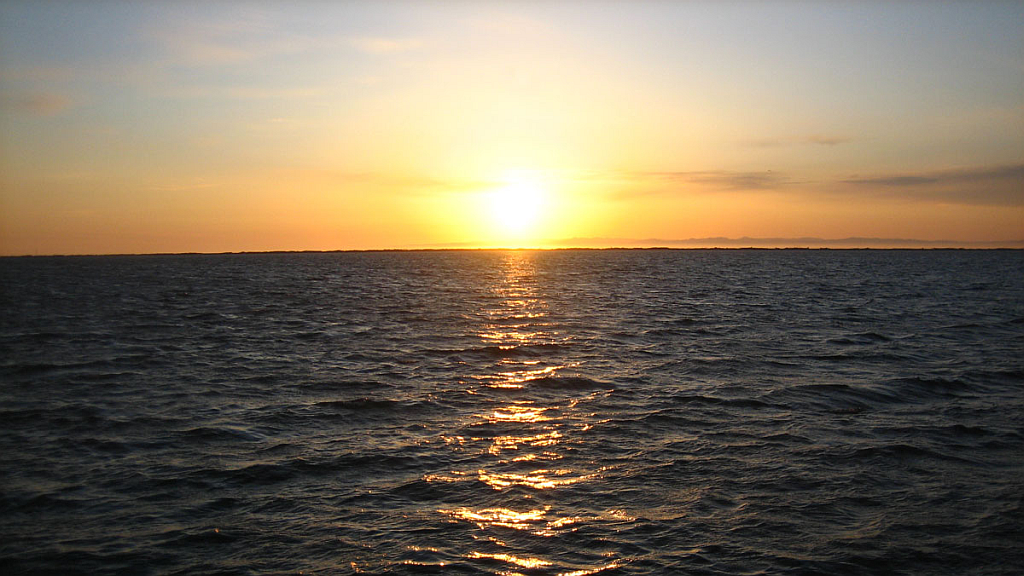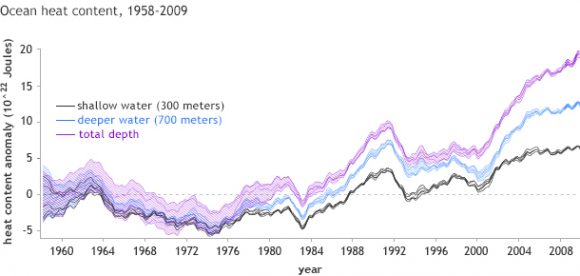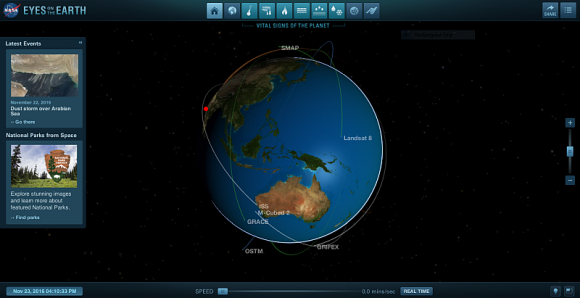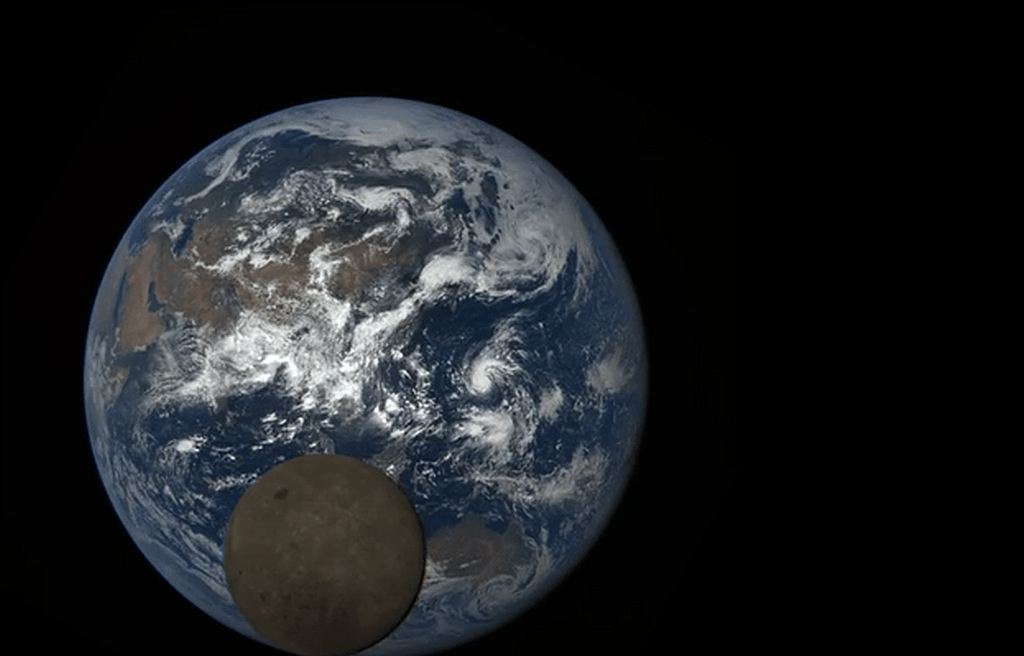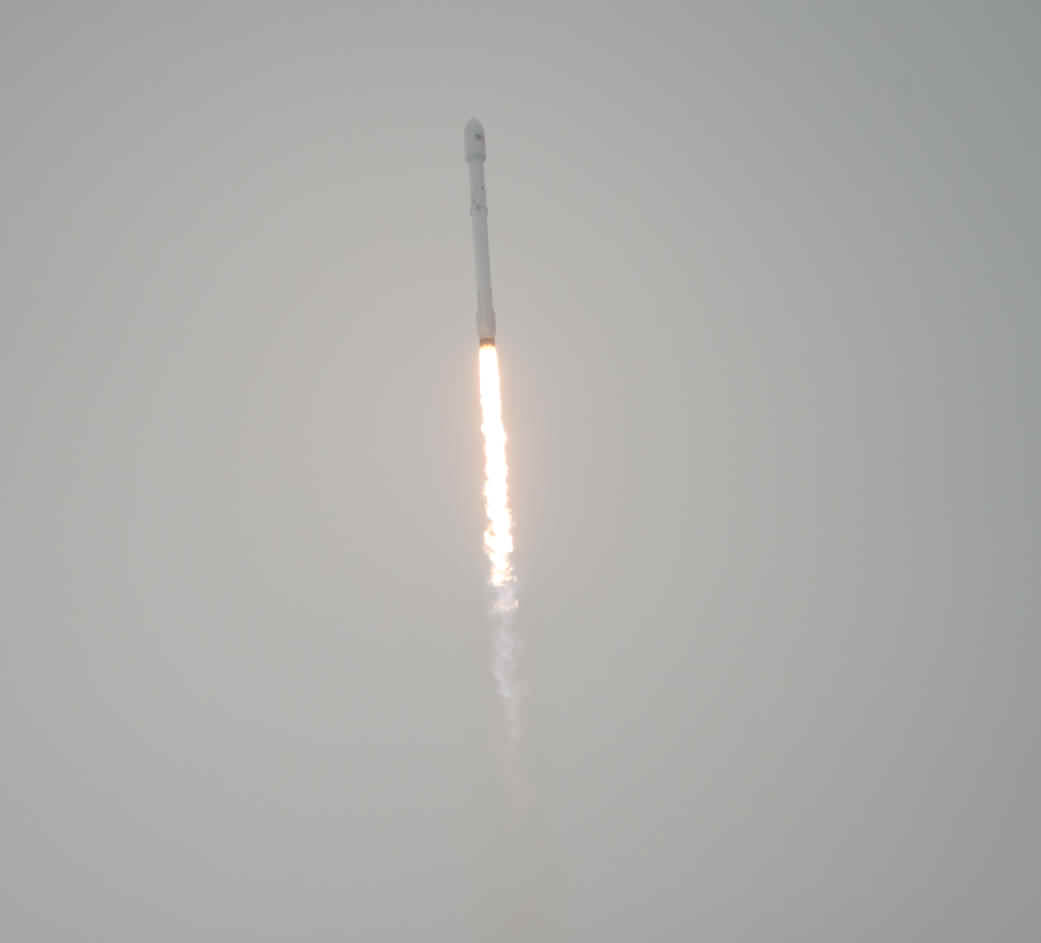For several months, scientists have been keeping an eye on a piece of Antarctica’s Larsen C ice shelf, waiting for the inevitable. And now it has happened.
Sometime between July 10 and July 12, 2017 a trillion ton iceberg split off, “changing the outline of the Antarctic Peninsula forever,” said one scientist.
The new iceberg is now called A68, and at 2,240 square miles (5,800 square km) it is one of the biggest ever recorded, about the size of Delaware in the US, or twice the size of Luxembourg.
A fissure on the ice shelf first appeared several years ago, but seemed relatively stable until January 2016, when it began to lengthen. In January 2017 alone, the crack grew by 20 km, reaching a total length of about 175 km.

The calving of the iceberg was confirmed by the Visible Infrared Imaging Radiometer Suite (VIIRS) on the Suomi NPP satellite and was reported this morning by Project MIDAS, an Antarctic research project based in the UK.
The MODIS instrument on NASA’s Aqua satellite also confirmed the complete separation of the iceberg.
An iceberg about the size of the state of Delaware split off from Antarctica. Read More: https://t.co/8IWU1FVb9J pic.twitter.com/yfOAyGARUi
— NASA Goddard (@NASAGoddard) July 12, 2017
Larsen C is a floating platform of glacial ice on the east side of the Antarctic Peninsula, is the fourth largest ice shelf ringing Earth’s southernmost continent. With the break-off of this iceberg, the Larsen C shelf area has shrunk by approximately 10 percent.
Some scientists say the Larsen C rift and iceberg calving is not a warning of imminent sea level rise, and linking climate change to this specific event is complicated. Adrian Luckman, Professor of Glaciology and Remote Sensing from Swansea University wrote a detailed explanation of this for The Conversation.
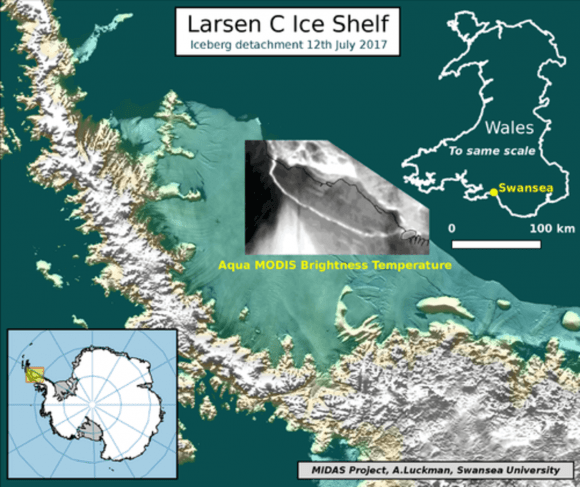
David Vaughan, glaciologist and Director of Science at British Antarctic Survey (BAS), said, “Larsen C itself might be a result of climate change, but, in other ice shelves we see cracks forming, which we don’t believe have any connection to climate change. For instance on the Brunt Ice Shelf where BAS has its Halley Station, there those cracks are a very different kind which we don’t believe have any connection to climate change.”
While Vaughan said they see no obvious signal that climate warming is causing the whole of Antarctica to break up, he added that there is little doubt that climate change is causing ice shelves to disappear in some parts of Antarctica at the moment.
RT @adrian_luckman: animation based on real data to give a sense of the true dimensions of the #LarsenC #iceberg ??? https://t.co/eqSR9MvPO0 pic.twitter.com/ZPx9c5a7Y7
— ESA EarthObservation (@ESA_EO) July 12, 2017
“Around the Antarctic Peninsula, where we saw several decades of warming through the latter half of the 20th century, we have seen these ice shelves collapsing and ice loss increasing,” he said. “There are other parts of the Antarctica that which are losing ice to the oceans but those are affected less by atmospheric warming and more by ocean change.
Scientists said the loss of such a large piece is of interest because ice shelves along the peninsula play an important role in ‘buttressing’ glaciers that feed ice seaward, effectively slowing their flow.
“The interesting thing is what happens next, how the remaining ice shelf responds,” said Kelly Brunt, a glaciologist with NASA’s Goddard Space Flight Center in Greenbelt, Maryland, and the University of Maryland in College Park. “Will the ice shelf weaken? Or possibly collapse, like its neighbors Larsen A and B? Will the glaciers behind the ice shelf accelerate and have a direct contribution to sea level rise? Or is this just a normal calving event?”
The U.S. National Ice Center will monitor the trajectory of the new iceberg, but they don’t expect it to travel far very fast, and it shouldn’t cause any immediate problems for navigation of ships.
See additional imagery and animations from Goddard Space Flight Center.
Sources and additional reading:
ESA, British Antarctic Survey, NASA.

